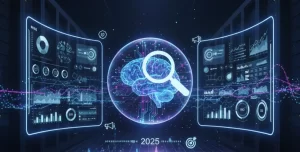
Is Your AI Sustainable? Questions to Ask
Table of Contents
Introduction
Welcome to WikiGlitz!
We have brought you this amazing blog on the growing importance of sustainable AI and the questions you should ask to ensure that your AI systems are not negatively impacting the environment.
As AI becomes more integrated into every aspect of modern life, from business operations to healthcare and beyond, the energy demands associated with AI have surged. This raises an important question: Is your AI system sustainable?
In this blog, we’ll explore the intersection of AI and sustainability, how AI impacts the environment, and the steps you can take to minimize its carbon footprint.
Understanding these factors will help ensure that your AI technologies are aligned with the broader goals of sustainability.
Key Takeaways:
- Sustainable AI focuses on reducing energy consumption and minimizing the environmental impact of AI technologies.
- Implementing green AI practices and using energy-efficient AI systems are crucial for lowering the carbon footprint of AI operations.
- Ethical AI development that prioritizes sustainability is key to long-term positive environmental outcomes.
What is sustainable AI?
The term “sustainable AI” describes the creation and application of AI systems with the least amount of negative environmental impact.
As AI models become larger and more complex, they require substantial computing power, which results in higher energy consumption.
Sustainable AI emphasizes reducing this energy use while maintaining the performance and effectiveness of AI solutions.
By adopting green AI practices, such as using more efficient algorithms and powering data centers with renewable energy, organizations can significantly reduce their environmental footprint.
The goal is to strike a balance between technological advancement and environmental responsibility.
How can AI be sustainable?
AI can become more sustainable through a combination of green AI practices and technology innovations. Here are a few ways to make AI more eco-friendly:
- Optimizing algorithms: Efficient algorithms can perform the same tasks with less computational power, reducing energy use.
- Energy-efficient data centers: Data centers that power AI systems consume enormous amounts of energy. By switching to renewable energy sources, companies can minimize the carbon footprint of these operations.
- Eco-friendly hardware: Selecting energy-efficient servers, processors, and storage devices can significantly reduce the environmental impact of AI operations.
These steps help ensure that AI and sustainability work hand in hand, enabling businesses to use AI responsibly without contributing to environmental degradation.
What is the environmental impact of AI?
The environmental impact of AI is significant due to the high energy requirements for training and running AI models, especially those involving deep learning.
The training of a single large AI model can generate as much carbon dioxide as several cars running for a year.
This is because AI models often require thousands of hours of computing, which translates into massive energy consumption.
Moreover, the data centers used to run AI models need to be continuously cooled, further increasing energy use.
To mitigate this impact, organizations need to adopt AI carbon footprint reduction strategies, such as optimizing their use of resources and investing in energy-efficient AI systems.
How does AI affect sustainability?
AI can both positively and negatively affect sustainability, depending on how it’s designed and implemented.
On one hand, AI has the potential to optimize energy usage, reduce waste, and support environmental initiatives by analyzing data in real-time and providing insights for smarter decision-making.
For example, AI is being used to optimize power grids, reduce industrial waste, and improve water management systems.
On the other hand, AI systems can have a detrimental effect on sustainability due to their significant energy demands.
Training large AI models often requires vast amounts of computational power, which translates into higher carbon emissions.
This is why energy-efficient AI and green AI practices are essential to balance AI’s environmental benefits with its carbon footprint.
Can AI help reduce carbon emissions?
Yes, AI can help reduce carbon emissions in several ways. One of the most significant contributions AI can make is through optimization.
By analyzing vast amounts of data, AI can help industries become more efficient in their use of resources and energy. Here are some ways AI can contribute to carbon reduction:
- Optimizing energy grids: AI can analyze patterns of energy consumption to optimize the distribution of electricity, reducing waste and making power grids more efficient.
- Improving transportation efficiency: AI can optimize logistics and supply chain operations, reducing fuel consumption by finding the most efficient routes for transportation.
- Predicting energy demand: AI systems can predict when and where energy will be needed most, allowing for better energy management and reduced emissions from power plants.
These applications demonstrate how AI can be a powerful tool in efforts to lower carbon emissions and promote sustainability.
What are the challenges of sustainable AI?
Despite its potential, there are several challenges to achieving sustainable AI:
- High energy demands: Training and running AI models, especially large ones, requires substantial energy, making it difficult to balance performance with sustainability.
- Resource consumption: AI development involves significant use of hardware and infrastructure, which can strain environmental resources. Reducing the energy usage of AI systems without compromising their effectiveness is an ongoing challenge.
- Balancing innovation and sustainability: Companies often prioritize AI performance and innovation over sustainability, which can lead to the development of systems that are not energy-efficient or environmentally friendly.
Addressing these challenges requires commitment from businesses to adopt green AI practices and make sustainable AI development a priority.
What are green AI practices?
Green AI techniques are tactics and approaches that lessen AI systems’ negative environmental effects.
These practices are essential for developing sustainable artificial intelligence that doesn’t sacrifice the environment for performance. Here are a few examples of green AI practices:
- Using efficient algorithms: Selecting algorithms that require less computational power while still delivering high performance.
- Cloud computing powered by renewable energy: Hosting AI systems in data centers that run on renewable energy can significantly reduce carbon emissions.
- Hardware optimization: Using energy-efficient processors, GPUs, and storage solutions to minimize the energy needed for AI operations.
- Model compression: Reducing the size and complexity of AI models without affecting accuracy, thus lowering the energy required for training and inference.
These practices help companies implement sustainable AI solutions that contribute to the reduction of their AI carbon footprint.
How can AI be energy-efficient?
Energy-efficient AI is essential to reducing the environmental impact of artificial intelligence technologies. Here’s how AI can be made more energy-efficient:
- Reducing model complexity: Simplifying AI models by using fewer parameters without sacrificing accuracy can greatly reduce the energy required for training.
- Federated learning: By distributing the training process across several decentralized devices, federated learning reduces the need for centralized, high-energy data centers.
- Cloud-based services: Migrating AI operations to cloud platforms that prioritize energy efficiency, especially those powered by renewable energy sources.
- Data pruning: Eliminating unnecessary or redundant data can reduce the time and energy needed to train models, making AI more sustainable.
These strategies not only contribute to AI carbon footprint reduction but also improve the overall efficiency and scalability of AI systems.
How to make AI more sustainable?
To make AI more sustainable, businesses and developers must take deliberate steps to incorporate eco-friendly AI solutions into their operations. Here are some ways to achieve this:
- Optimize data processing: Minimizing the amount of data processed and stored can help reduce energy consumption.
- Use renewable energy sources: Power AI systems with renewable energy, such as solar or wind power, to decrease reliance on fossil fuels.
- Implement green AI design principles: Build AI systems with sustainability in mind, ensuring they are both energy-efficient and ethically designed.
- Continuous monitoring and improvement: Regularly audit the energy consumption and carbon emissions of AI systems, making adjustments to improve efficiency over time.
By incorporating these practices, companies can ensure their AI systems are aligned with broader sustainability goals.
Conclusion
Welcome to the conclusion of this amazing blog brought to you by WikiGlitz.
As AI becomes an integral part of modern technology, the need for sustainable AI is more critical than ever.
By adopting green AI practices, businesses can reduce their environmental footprint, lower energy consumption, and contribute to global sustainability efforts.
Whether it’s through optimizing algorithms, using renewable energy sources, or building energy-efficient data centers, the future of AI must be aligned with environmental responsibility.
By asking the right questions and making sustainability a priority, organizations can ensure their AI systems are not only cutting-edge but also eco-friendly.
Follow WikiGlitz for more insights on the intersection of technology and sustainability, and stay ahead in implementing responsible, sustainable AI solutions.
FAQs
What are the key benefits of sustainable AI for businesses?
Sustainable AI offers numerous benefits, including reduced energy costs, improved operational efficiency, a lower carbon footprint, and enhanced corporate reputation through environmentally responsible practices.
How can companies measure the carbon footprint of their AI systems?
Companies can measure their AI carbon footprint by monitoring energy consumption, tracking emissions associated with data centers, and calculating the overall environmental impact of their AI operations.
What are the long-term impacts of AI on sustainability efforts?
In the long term, AI can support sustainability by optimizing resource use, reducing waste, and improving energy management across industries. However, without energy-efficient AI solutions, the environmental cost of AI could outweigh its benefits.
Are there government regulations promoting sustainable AI?
Several countries are introducing regulations that promote sustainable AI and encourage the development of AI systems powered by renewable energy and designed with minimal environmental impact.
What are the future trends in sustainable AI development?
Future trends include the development of energy-efficient AI hardware, AI-powered environmental monitoring systems, and the integration of AI with sustainable technology across industries such as energy, agriculture, and manufacturing.
Want to keep up with our blog?
Our most valuable tips right inside your inbox, once per month.
Error: Contact form not found.
WikiGlitz Team
Welcome to WikiGlitz, your ultimate destination for tech insights and innovation. Our expert team is dedicated to delivering free resources and professional advice on various technology topics, including Artificial Intelligence, Cyber Security, Cloud Computing, and more. We strive to empower our readers with up-to-date information and practical guidance, ensuring you stay ahead in the rapidly evolving tech landscape. At WikiGlitz, we are passionate about making complex technology accessible to everyone. Our team of seasoned experts curates content that is both informative and engaging, helping you understand and leverage the latest tech trends. Whether you're a tech enthusiast or a professional, WikiGlitz is your go-to source for reliable, expert-driven content. Join us on this journey to explore and embrace the future of technology.





